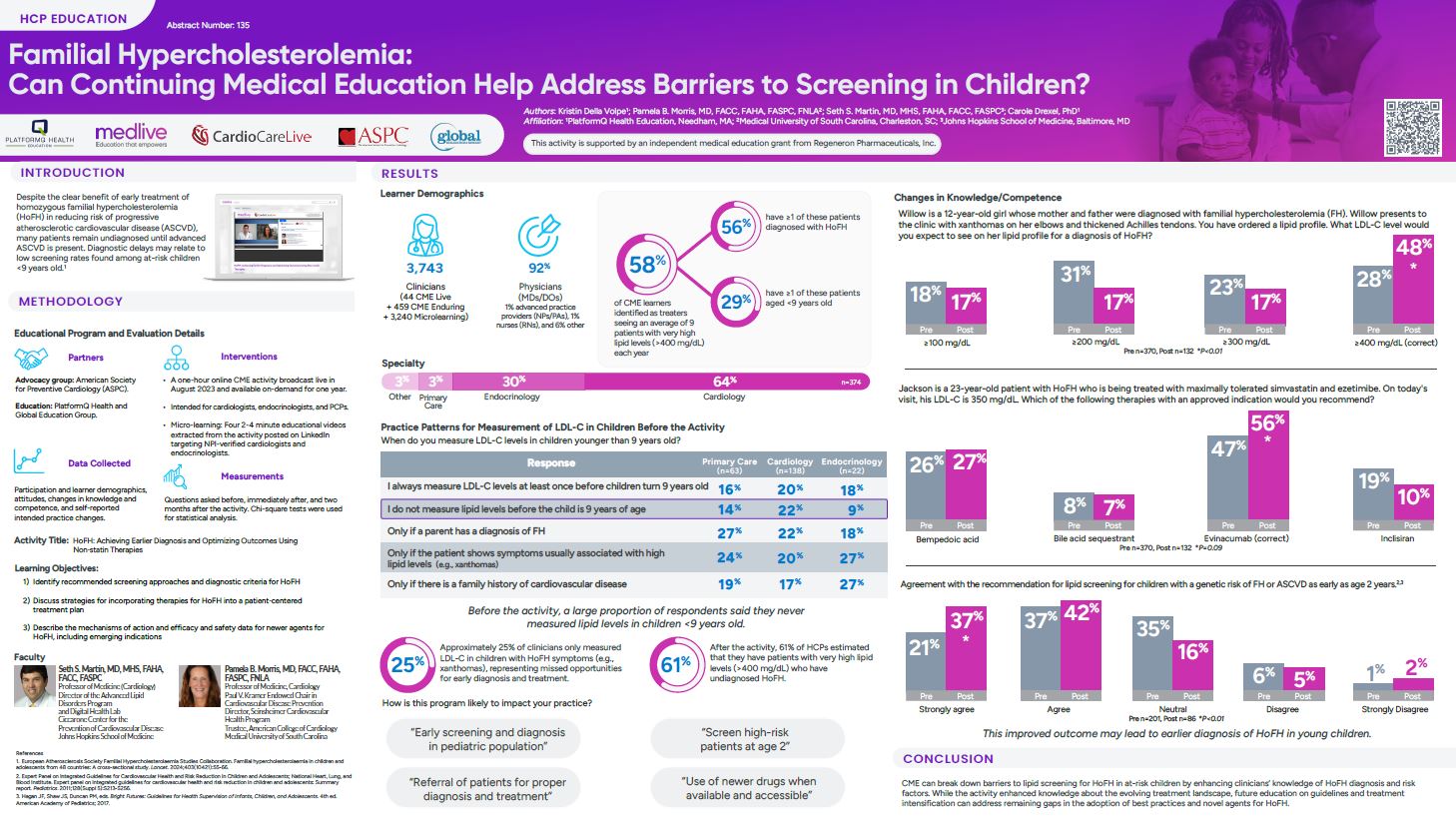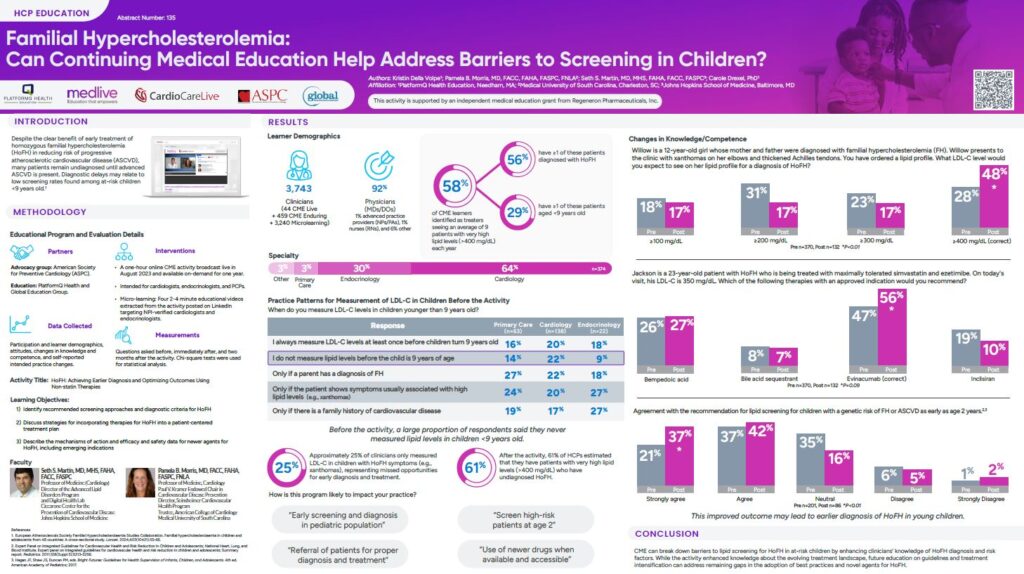Early treatment of homozygous familial hypercholesterolemia (HoFH) improves outcomes for children and reduces the risk of progressive atherosclerotic cardiovascular disease. Unfortunately, the disease often goes undetected until it is in the advanced stages.
To address this issue, PlatformQ Health and the American Society for Preventive Cardiology teamed up to develop digital education to close the knowledge gap among cardiologists, endocrinologists, and PCPs. The CME session was designed to:
- Identify recommended screening approached and diagnostic criteria
- Discuss strategies for incorporating therapies for HoFH into a patient-centered treatment plan
- Describe the mechanisms of action, efficacy, and safety data for newer HoFH agents
The session included a one-hour live broadcast, which remains available online, along with 2-4 minute educational video excerpts, which were shared on LinkedIn to reach NPI-verified cardiologists and endocrinologists. Outcomes from the education were presented at the 2024 National Lipid Assocation Scientific Sessions.
 Of the 3,743 learners who participated in the digital education, 64% were cardiologists, 30% were endocrinologists, and 3% were primary care providers. 58% identified as treaters seeing an average of nine patients a year with very high lipid levels.
Of the 3,743 learners who participated in the digital education, 64% were cardiologists, 30% were endocrinologists, and 3% were primary care providers. 58% identified as treaters seeing an average of nine patients a year with very high lipid levels.
Prior to the session, approximately 25% of clinicians said they only measured LDL-C in children with HoFH symptoms such as xanthromas. After the activity, 61% of clinicians said they have patients with very high lipid levels (>400 mg/dL) who have undiagnosed HoFH.
Surveys held prior to and after the CME session found improvements in clinician knowledge/competence in identifying HoFH, choosing the appropriate therapy, and determining lipid screening recommendations in children with genetic risk factors.
While the results were promising, more education is needed to further close knowledge gaps. The evolving treatment landscape for HOFH, along with the need for earlier intervention, make CME education an important tool for improving health outcomes.

